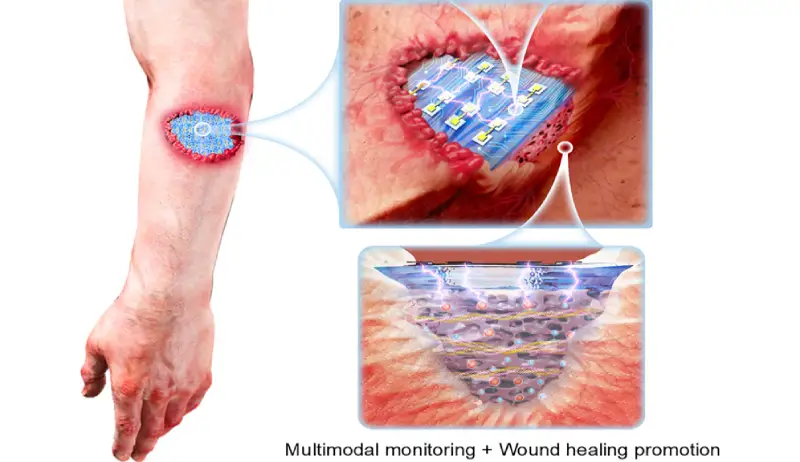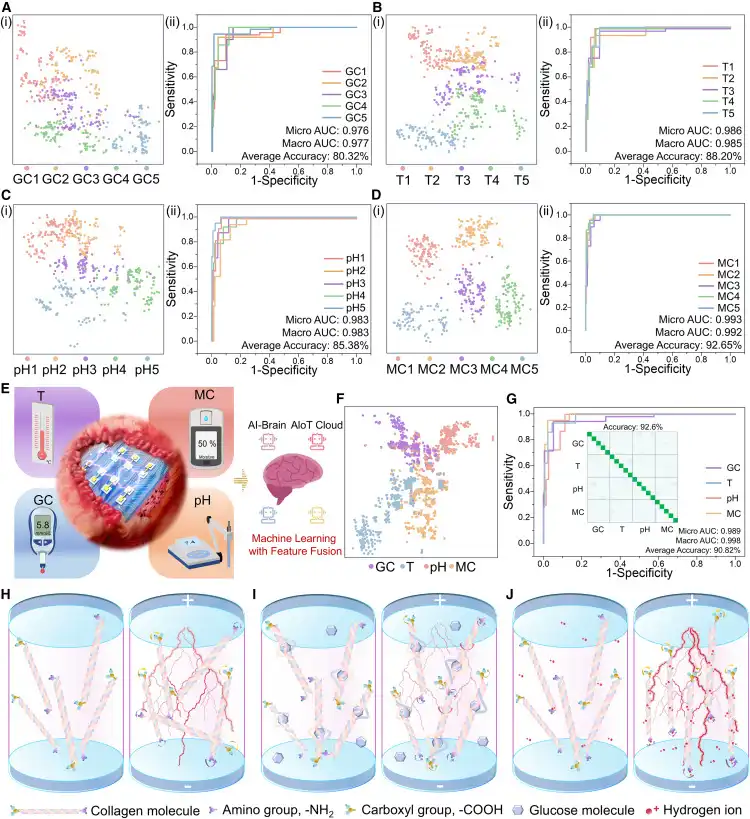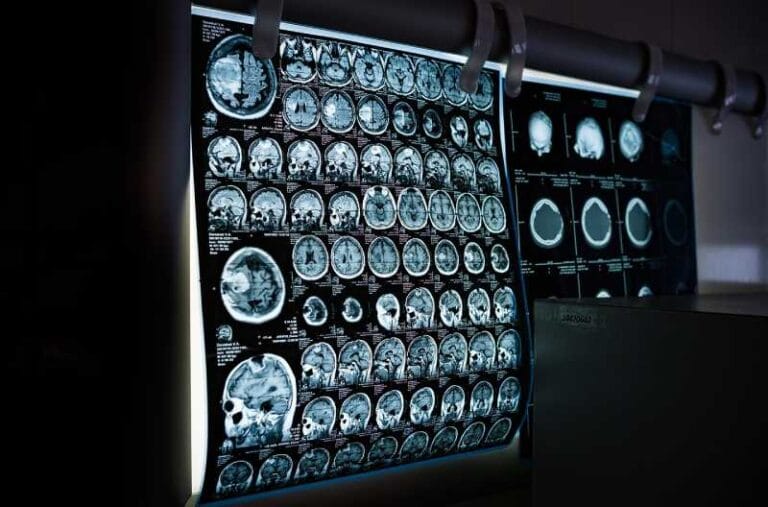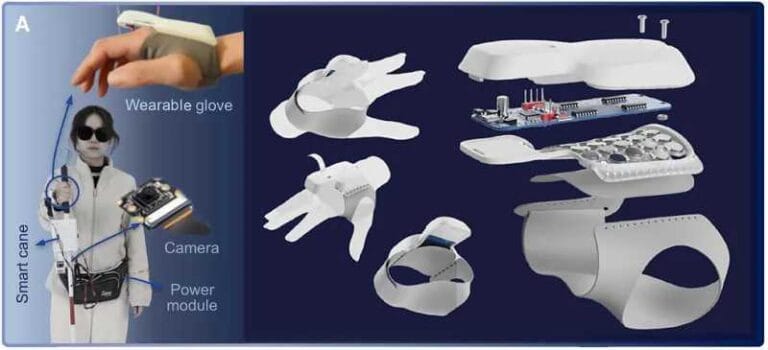AI device promotes rapid healing of chronic wounds

Researchers at Peking University, in partnership with institutions in Germany, Taiwan and China, have developed a state-of-the-art bioelectronic device capable of monitoring four essential wound biomarkers in real time: glucose, temperature, pH and humidity. The technology’s differential lies in its base: an acellular dermal matrix extracted from porcine dermal tissue, which is totally biocompatible and has therapeutic properties.
“The innovation lies in combining multimodal sensing with treatment, all in a single device with very low energy consumption,” explain the authors.
The collagen matrix was treated with allicin – a natural antimicrobial compound derived from garlic – and covered with gold electrodes and an insulating layer of calcium phosphate. The result is a flexible sensor that responds to electrical stimuli precisely, without interfering with living tissue.
According to the researchers, the device consumes just 5 pW (picoWatts), making it the most efficient bioelectronic device ever tested for this type of application.
The device uses a “feature fusion” approach to interpret complex electrical signals, with the aid of convolutional neural networks. This allows precise identification of the levels of each biomarker, even when they occur simultaneously.
The cloud-analyzed data is converted into highly accurate graphs. In tests with different glucose levels, for example, the classification accuracy reached 92.6%.
The multimodal sensing capacity and operating mechanisms in the device

In addition to its diagnostic function, the device also acts directly in treatment. Trials on rats showed that wounds treated with the sensor healed more quickly, with greater blood vessel formation, collagen deposition and cell proliferation.
“We obtained a bacterial inhibition rate of over 95% against Staphylococcus aureus,” say the authors. The antimicrobial effect was attributed to the combination of the collagen matrix and allicin.
In vitro cytotoxicity tests showed an increase in cell proliferation in cultures treated with the device. In experiments with rats, no side effects were observed in vital organs such as the liver, lungs or kidneys.
Histological and RNA analyses also confirmed the activation of genes associated with tissue regeneration and modulation of the immune system, reinforcing the therapeutic action of the technology.
With the growing demand for medical devices capable of carrying out personalized diagnoses and continuous interventions, this bioelectronic platform represents an important advance in the interface between technology, biology and artificial intelligence.
“Our goal is to develop an intelligent system that not only monitors the wound environment, but acts in real time to promote healing,” the researchers conclude.
Reference: Liu, Y., Liu, Z., Duan, X., et al. Wound monitoring based on machine learning using a pro-healing acellular dermal matrix. Device, Volume 3, Article 100808, Elsevier. Available at: https://doi.org/10.1016/j.device.2025.100808






